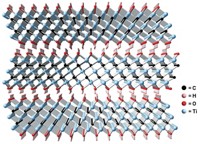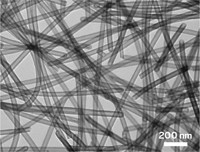Advertisement
Grab your lab coat. Let's get started
Welcome!
Welcome!
Create an account below to get 6 C&EN articles per month, receive newsletters and more - all free.
It seems this is your first time logging in online. Please enter the following information to continue.
As an ACS member you automatically get access to this site. All we need is few more details to create your reading experience.
Not you? Sign in with a different account.
Not you? Sign in with a different account.
ERROR 1
ERROR 1
ERROR 2
ERROR 2
ERROR 2
ERROR 2
ERROR 2
Password and Confirm password must match.
If you have an ACS member number, please enter it here so we can link this account to your membership. (optional)
ERROR 2
ACS values your privacy. By submitting your information, you are gaining access to C&EN and subscribing to our weekly newsletter. We use the information you provide to make your reading experience better, and we will never sell your data to third party members.
Materials
Nickel Forges Steel Improvements
Small, brittle particles help make steel lighter, stronger, more ductile
by Matt Davenport
February 9, 2015
| A version of this story appeared in
Volume 93, Issue 6
Steel just had to be strong in the old days, but builders and engineers are now demanding more out of the material. They want a metal that is tough, but also flexible and lightweight, and are therefore turning increasingly to titanium alloys. Researchers have developed low-density steels by alloying iron with aluminum, carbon, and manganese, but these products are often weak or brittle. Scientists led by Hansoo Kim of the Graduate Institute of Ferrous Technology, in South Korea, have shown that a little nickel goes a long way toward making low-density steel that is both strong and flexible (Nature 2015, DOI: 10.1038/nature14144). The team demonstrated that nickel catalyzed growth of iron-aluminum microparticles and nanoparticles at defect sites in a low-density, aluminum-rich steel when it was annealed at around 900 °C. These brittle particles strengthened the steel, but because they were small and dispersed, they did not compromise its pliability. Kim says the steel’s properties are better balanced than those of titanium alloys, adding that the new alloy is also less expensive and could thus be attractive to the automobile and aerospace industries.





Join the conversation
Contact the reporter
Submit a Letter to the Editor for publication
Engage with us on Twitter